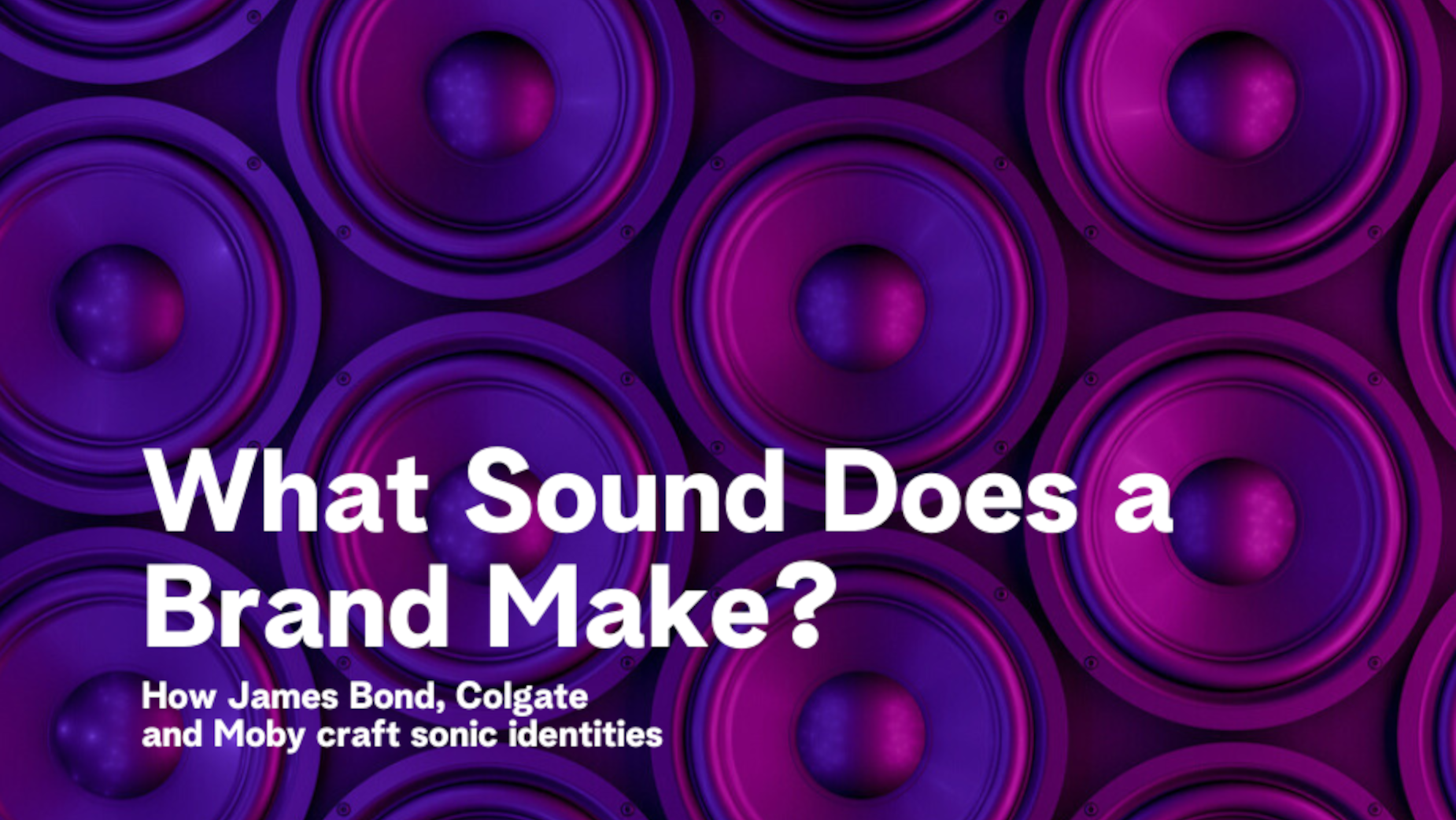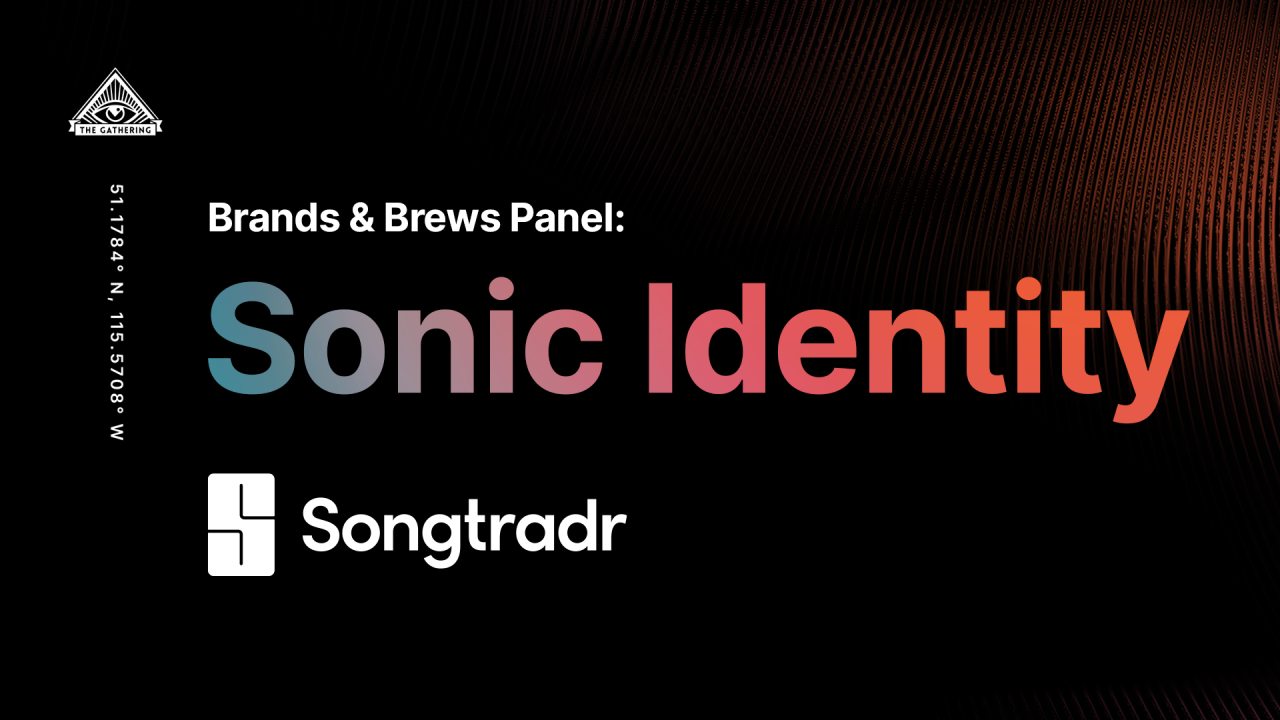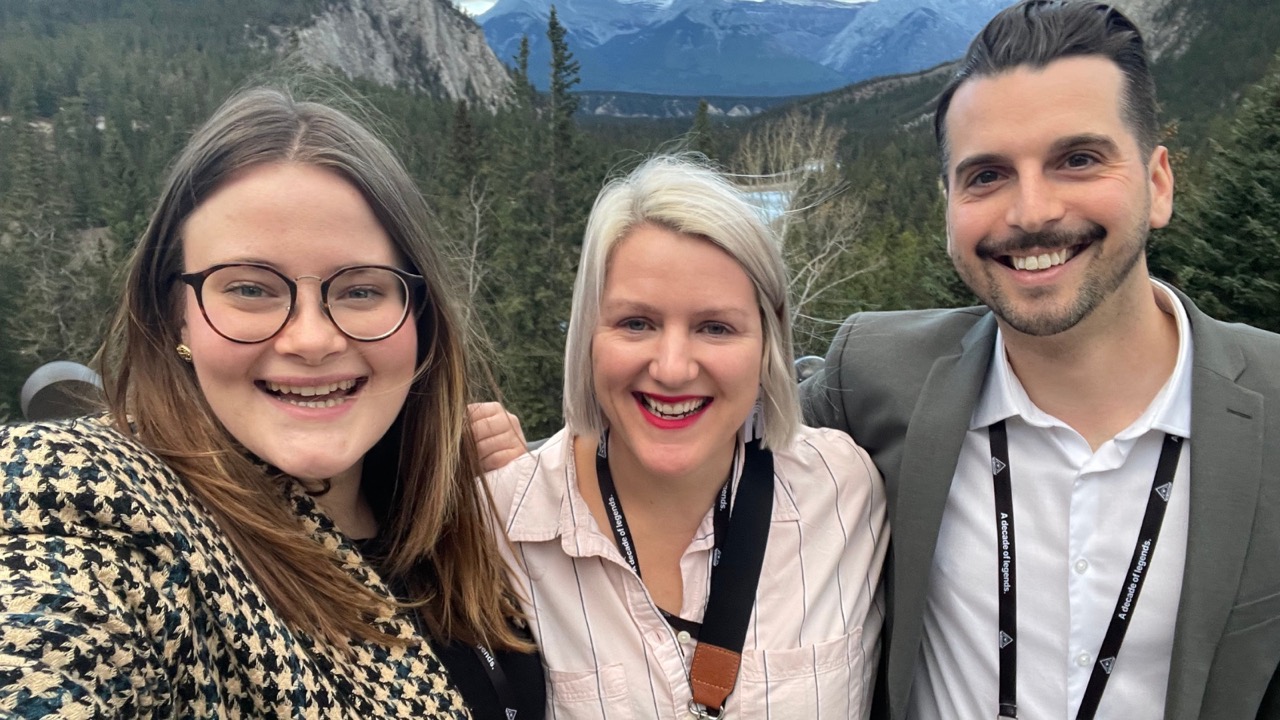
What Sound Does a Brand Make?

What sound does a brand make?
This is the question that’s been nagging me for weeks - not because I’m grappling with the answer, but because it’s a question I should have started asking myself years ago.
I recently attended a panel on sonic identities at The Gathering Summit, a marketing conference for some of the biggest brands in the world, held in Banff, AB. Representatives from Songtradr, a B2B licensing platform, and Massive Music, a sonic branding agency, discussed how marketers strategically use sound to help shape brands that are more recognisable, memorable and emotionally connected with their audiences.
I immediately felt a mix of excitement and embarrassment. Excited because, like an illness that’s finally diagnosed, it gave a name to something I’ve felt strongly about for years but never had something definitive to call it. Embarrassed because, up until that moment, I hadn’t seen 'sonic' associated with anything other than 'youth' and 'the hedgehog.'
I’ve spent the last eight years with one foot in advertising and the other in video production, during which I’ve curated music for so many different clients and projects. And there’s no better feeling than experiencing strong visual storytelling underscored by the perfect track. Differences in taste are inevitable when it comes to music - but when it’s strategically used to tell a story - you know when you’ve gotten it right.
"People think about what they see but they feel what they hear.” – John Taite, executive vice president, Made Music Studio

In video, there’s no debate over whether music is essential: it creates mood and atmosphere, adds cultural context, and cues the audience into unseen forces at play within a scene. Maybe that’s why entertainment brands have been using 'sonic logos' strategically for decades while many marketers (myself included) still refer to them sardonically as 'jingles.'
Not Colgate, though. They, along with their sonic branding partner Massive Music, set out to solve a unique branding challenge. Colgate wanted to use sound to communicate optimism to audiences in over 200 markets globally. It needed to be both consistent and flexible across geographies, easy to implement for all the folks who touch the brand and to clearly communicate optimism no matter the cultural context they found themselves in.
This led to a simple yet powerful truth - people hum when they’re happy. They used this, along with a few other sonic ingredients, to create an identity people can instinctively connect with all around the world.
"As a video creator, I’ve been guilty of using music as a finishing touch. As a marketer, I was starting to see why it should be part of the foundation of a brand."
If we were to create a sonic identity in tandem with a visual identity to create a clear ‘look and feel’ for brands, not only would it paint a clearer picture for our clients, it would lend inspiration to every person who’s responsible for expressing the brand, inside and outside the organisation.
One of those outside influences can be the artists themselves. When it comes to approaching these kinds of partnerships, there’s a lot to consider - the budgeting and licensing aspect of working with musicians deserves a blog of its own - but there are a few key takeaways that should affect your decision-making.
For one, the definition of 'selling out' has changed dramatically over the last 25 years, and it’s easy to understand why. The bulk of artists’ earnings now come from touring, merch and licensing opportunities. And in a landscape where fans are becoming more and more segmented, artists need to find new ways to grow their audiences.
In the late ‘90s, Moby was one of the first artists to fully embrace television commercials as a marketing opportunity with multiple songs scoring commercials for major brands to support his breakout album’s release. Those partnerships turned an “obscure underground record made in the bedroom of a guy in his late-30s” into a cultural moment that served multiple brands, the artist and his budding fanbase.
"The music itself is very precious. The marketing of the music is not precious at all.” – Moby (AmericanSongwriter.com)
Which leads to the question of equity. Do you want to spend a considerable amount of cash borrowing equity from a big name who provides a solid fanbase and instant recognition, or do you seek out the artists who are below - and could rise above - the radar? It’s also incredibly important to find alignment between your brand and the artist. As noted in the panel, brands are beginning to care much more about who they partner with, not just the catchiness of the song.
No matter the fame or reputation of the artist you partner with, your relationship will be the same: if you support artists in their craft, they’ll help your brand stay relevant to the people you care about. And this isn’t just about audiences recognising music that’s on-trend, it’s about contributing to the culture your audiences are already a part of.
If “design is the silent ambassador of your brand,” as Paul Rand said, then music must be the invisible ambassador.
And that brings me to James Bond, a franchise that has been shaping a unique sonic identity, using both composition and artist partnerships, to remain both consistent and relevant for over 60 years. The Bond franchise uses the same ingredients to create new recipes with different artists, from Nancy Sinatra to Tina Turner to Adele, all finding ways to put their unique stamp on the franchise.
Even Bond’s signature introduction of, “Bond… James Bond.” can be considered part of the sonic identity, as the face and voice of the actor changes over time, but the delivery remains consistent. In fact, it’s not unrealistic to think the actor who plays Bond in ten, twenty or thirty years from now may look drastically different from the faces we’re used to, but still instantly recognisable by sound.
Like 'authenticity' and 'storytelling,' sonic identities can easily be mislabelled as a new marketing trend, when in reality, they are just now finally getting the spotlight they deserve. What is new and exciting is the way people (specifically gen z) are finding music, connecting with it and using it to tell their own stories. Music will always have a place in our hearts, but it’s path to getting there is changing all the time.

So, how will you incorporate sound into your brand?
To recap, here are a few sonic identity tips for marketers:
1. Start with a feeling
After all, that’s what any good ad will be remembered for. Like Colgate, your strategy should start with emotion and grow from there. How do you want to make people feel? What instruments and sounds will create or reinforce that feeling? Are there artists you could look to for inspiration or even potential partnerships? Consider your audiences and how they might differ by age, location and culture since that can affect how they interpret different musical styles and sounds.
2. Plan beyond the sound
Music is universal and incredibly personal. It can cross divides, but it can also create controversy. Put simply, music doesn’t exist in a bubble. And there are many nuances to consider outside of a piece of music, including the artist’s reputation, the culture it belongs to and the culture of the fanbase. But there are also great opportunities beyond an artist’s library, like live performances, cross-marketing campaigns or original music videos for songs you commission yourself.
3. Bring music into the conversation early on
Most importantly, don’t use music as a finishing touch or its potential will be limited by all the creative decisions that came before it. When discussed early, music can be a source of inspiration that better serves the project and becomes part of a long-term strategy for building the brand. So, while you may not be ready to work with a sonic branding agency or to craft a sonic identity yourself, there’s nothing preventing you from using music to create a lasting impression on your brand and the people you want to connect to most.














